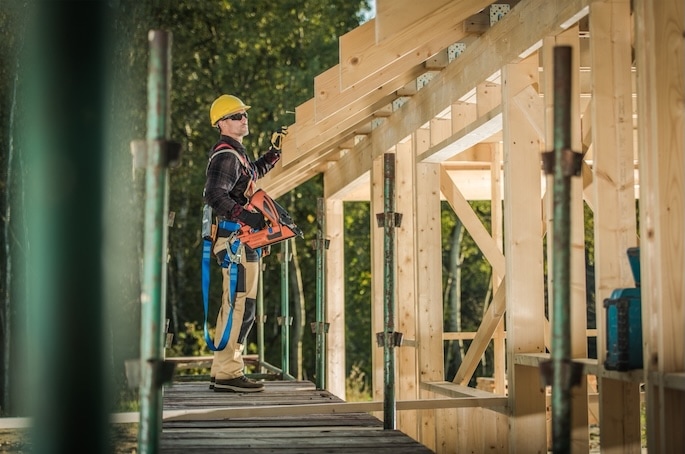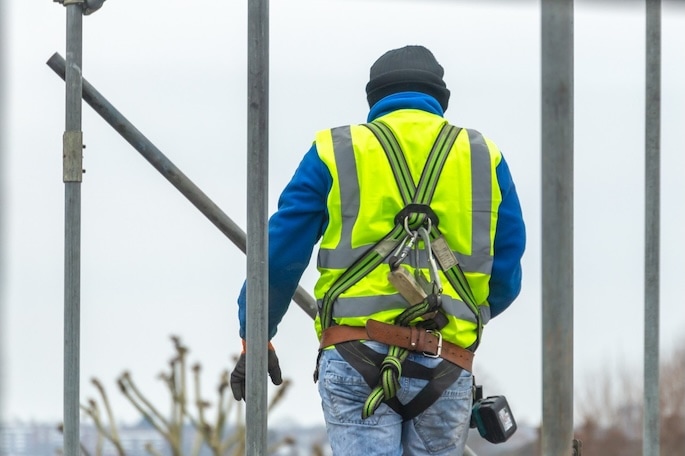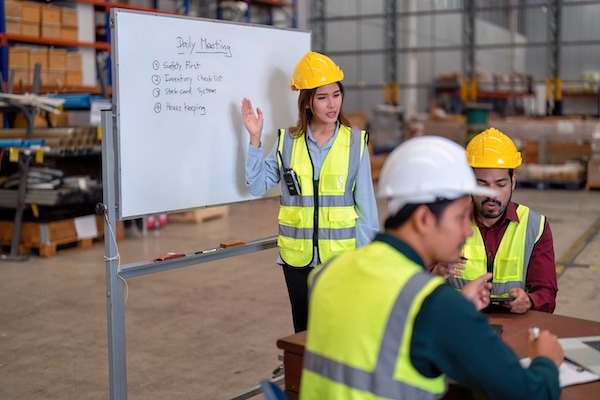Mastering the Safety Audit: A Step-by-Step Guide to Compliance Success

A safety audit is a critical process for any organization committed to maintaining a safe and compliant workplace. Regular safety audits not only help identify hazards but also ensure that your company meets regulatory requirements and industry standards. In this comprehensive guide, we will walk you through the essential steps to mastering the safety audit […]
Train to Retain: Making Fall Prevention Training Stick

Falls are a leading cause of workplace injuries and fatalities, particularly in industries involving work at heights. While initial training is essential, ensuring that safety knowledge is retained and applied consistently requires deliberate strategies. This article explores effective methods to enhance fall prevention training retention, emphasizing interactive techniques, certifications, and the importance of repetition. The […]
Fall Arrest vs. Fall Restraint: Understanding the Right System for the Job

Falls are a leading cause of workplace injuries and fatalities, particularly in industries involving work at heights. Implementing effective fall protection systems is crucial for safeguarding workers. Two primary systems—fall arrest and fall restraint—serve distinct purposes and are suited to different scenarios. Understanding their differences is essential for selecting the appropriate system for your workplace. […]
The Anatomy of a Fall: What Really Happens and How to Prevent It

Falls are among the leading causes of workplace injuries and fatalities across various industries. Understanding the mechanics of a fall and implementing effective prevention strategies are crucial for ensuring worker safety. Understanding the Mechanics of a Fall A fall typically involves a loss of balance or support, leading to an uncontrolled descent. The severity of […]
Building a Fall Incident Response Plan

Falls remain one of the leading causes of serious workplace injuries and fatalities, particularly in construction and industrial settings. While prevention is paramount, organizations must also be prepared to respond effectively when incidents occur. A comprehensive Fall Incident Response Plan (FIRP) ensures swift action, minimizes harm, and facilitates thorough investigations to prevent future occurrences. 1. […]
Investing in Leadership: Why Safety Performance Begins with Executive Buy-In

In today’s fast-paced industrial landscape, workplace safety is more than just compliance—it’s a strategic imperative. While frontline employees are often the face of safety initiatives, the foundation of a robust safety culture is laid by executive leadership. When top executives prioritize safety, it permeates every level of the organization, leading to enhanced performance, reduced incidents, […]
Bridging the Gap: How Managers Translate Safety Data into Action

In today’s data-rich work environments, safety data is abundant. From incident reports to near-miss logs, organizations collect vast amounts of information daily. However, the true value of this data lies in its application. Managers play a pivotal role in interpreting safety data and transforming it into actionable strategies that enhance workplace safety and compliance. The […]
Leading by Example: The Impact of Manager Behavior on Safety Compliance

In any organization, safety compliance isn’t solely dictated by policies or procedures; it’s profoundly influenced by the behaviors and attitudes of its leaders. Managers who consistently demonstrate a commitment to safety set the tone for their teams, fostering an environment where safety becomes a shared value rather than just a mandate. The Power of Managerial […]
Managerial Communication: How Clear Safety Messaging Reduces Hazards

Effective safety communication is a cornerstone of hazard prevention in the workplace. Managers play a pivotal role in ensuring that safety messages are conveyed clearly and understood by all employees. This article explores the importance of managerial communication in reducing workplace hazards and offers best practices for enhancing safety messaging. The Importance of Clear Safety […]
Safety Starts with Training: The Manager’s Role in Workforce Education

In today’s dynamic work environments, safety is not just a policy—it’s a practice that begins with effective training. Managers play a pivotal role in shaping a culture where safety is prioritized, understood, and implemented daily. Their leadership in workforce education ensures that safety protocols are not only taught but also ingrained in the organizational ethos. […]
